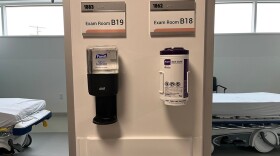Earlier this year, the Obama administration formed a White House Task Force to Protect Students from sexual assault.
Recently that task force announced a series of actions to identify the scope of the problem and help schools with prevention. One of the programs the administration highlighted is the Prevention Innovations initiative at the University of New Hampshire. I talked with Jane Stapleton, a co-director, and asked her to explain the program:
We work with communities to implement our Bystander Prevention Intervention strategies… two are most well-known: an in-person prevention program that teaches people how to intervene safely… and a social marketing campaign that role models bystander behavior… and that saturates the community. It literally demonstrates how to intervene.
Where and how is that done?
The images go on posters, screens, banners, we wrap sides of busses… and then we evaluate the effectiveness of the campaigns.
Is the rate of assault increasing or decreasing?
It’s actually remained pretty consistent since the first study in 1987. One in five college women are sexually assaulted during their college career.
What do we know that really works to prevent assault?
We know that actually teaching skills actually has a greater impact than just doing awareness outreach… they really need to be able to see themselves in the prevention strategies… that’s why this task force report is so important, because it’s a comprehensive approach to the problem. Everyone has a role to play… not just students. We advocate everybody including faculty, staff, administrators, parents, alumni, local businesses…
Doesn’t changing attitudes begin well before college?
Absolutely. We actually do a fair amount of work both in NH and nationally with domestic violence and sexual assault coalitions... doing this prevention work with elementary through high school age.
Do you have data to show the impact of your programs?
It’s really difficult to measure the impact… what often happens once you increase prevention and outreach (programs), reporting often increases. Students say, well, now I can report this, or people will listen to me. Every five years (since 1989) we’ve done an unwanted sexual experiences study… on our own campus, these things have actually decreased. You really measure impact over a longer period of time.








